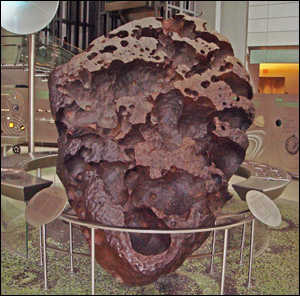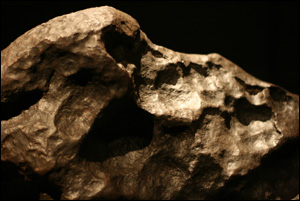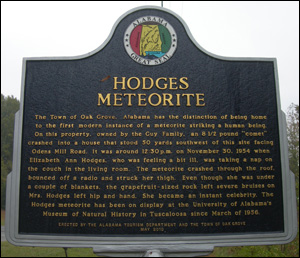 Meteorites are cool. The definition broadly refers to anything originating in outer space that ends up impacting the surface of the earth and surviving. When they enter the atmosphere these celestial bodies are exposed to a variety of significant factors. They are affected by friction, pressure and chemical reactions as they plummet toward our planet.
Meteorites are cool. The definition broadly refers to anything originating in outer space that ends up impacting the surface of the earth and surviving. When they enter the atmosphere these celestial bodies are exposed to a variety of significant factors. They are affected by friction, pressure and chemical reactions as they plummet toward our planet.
They burn up and become fireballs which we recognize as shooting stars. Some meteorites will burn away to nothing whereas others fare better. When these are spotted travelling through the atmosphere and then recovered after impact they are referred to a ‘falls’. The discovery of meteorites that have been on the planet for some time are called ‘finds’.
Categorizing meteorites is a fairly straightforward process at a base level. There are three categories that include stony meteorites, which are made up from silicate materials. Iron meteorites which are mostly composed of metallic elements. And stony-iron meteorites, which as you’d expect is a combination of both.
 It might seem that a meteorite hitting the earth is a rare phenomenon, this isn’t the case. It is believed that around 500 meteorites impact each year. What is rare is finding them. Only about four or five falls are recorded from this number.
It might seem that a meteorite hitting the earth is a rare phenomenon, this isn’t the case. It is believed that around 500 meteorites impact each year. What is rare is finding them. Only about four or five falls are recorded from this number.
Spotting falls is as you can tell from the figures not an easy thing to do. There are a few instances where scientific facilities have recorded meteorites travelling through the atmosphere and been able to calculate the impact site. However the vast majority of falls are recovered due to public reports. As such these instances tend to happen in densely populated areas on account that there are more people able to spot them.
 Plenty of stories exist about people and animals being hit by meteorites, but few can be substantiated. However one case that is fairly conclusive is that of Ann Hodges who was hit by a meteorite in 1954. It was a 4kg rock that came through her house, hit her radio and then her. Remarkably she escaped serious injury and the offending space rock is on display in the Alabama Museum of Natural History.
Plenty of stories exist about people and animals being hit by meteorites, but few can be substantiated. However one case that is fairly conclusive is that of Ann Hodges who was hit by a meteorite in 1954. It was a 4kg rock that came through her house, hit her radio and then her. Remarkably she escaped serious injury and the offending space rock is on display in the Alabama Museum of Natural History.
What you really want to know though is about the biggies. Right? Well, the biggest verified meteorite impact is located in South Africa and referred to as the Vredefort crater. It measures over 300 kilometres across and in 2005 was given the status of UNESCO World Heritage Site. The meteorite that caused the impact probably hit about 2 billion years ago and measured more than 10 kilometres across at the moment it hit. Hence the significant dent.
Obviously this is only scratching the surface of meteorites and the science involved. If you do want to know more it’s probably worth looking into the work of the Meteoritical Society or seeing what the British And Irish Meteorite Society is up to.
About the author: When he isn’t busy growing his meteorite collection, Stan Spurlock writes on ideas for novelty gifts at Find Me A Gift.